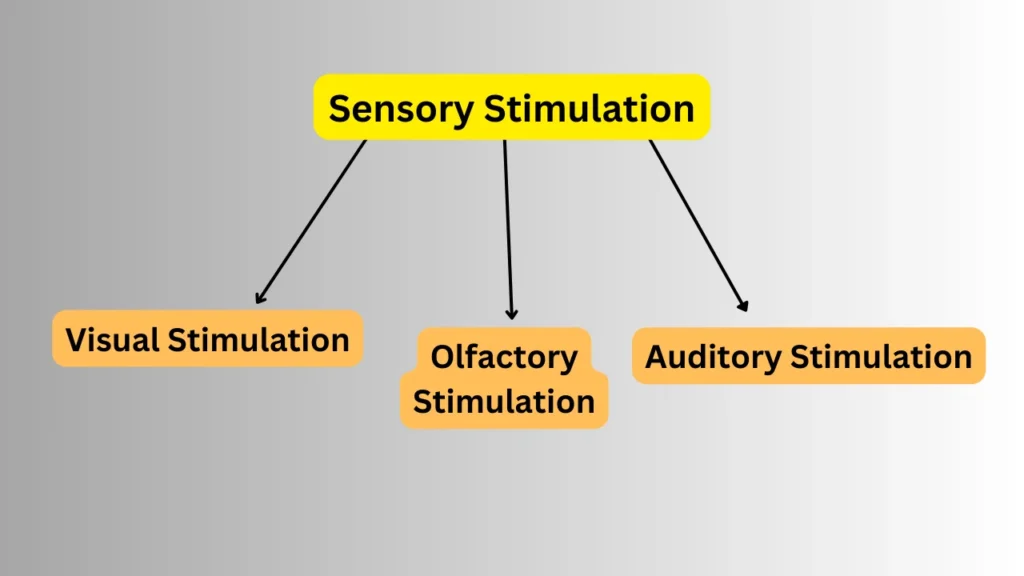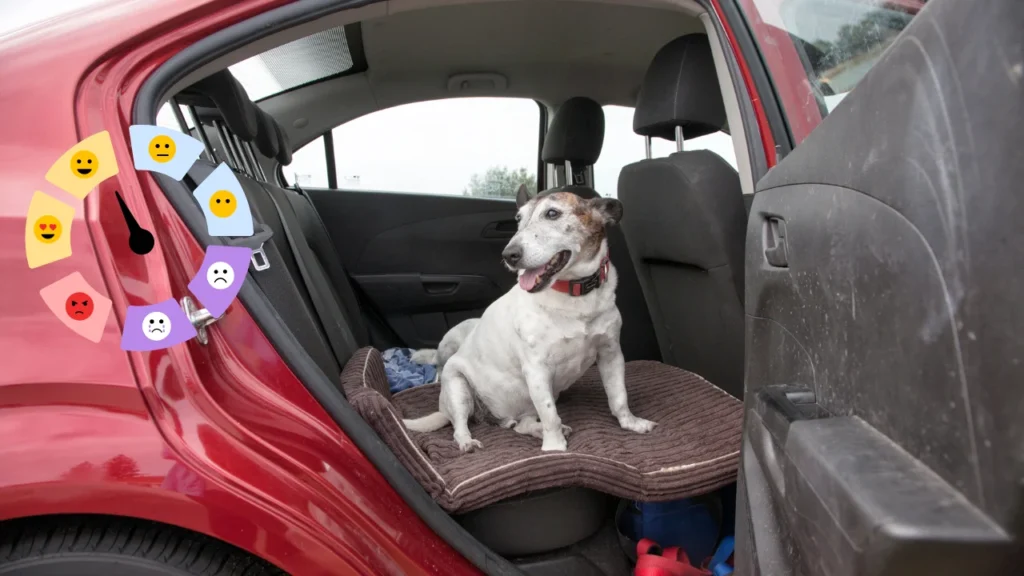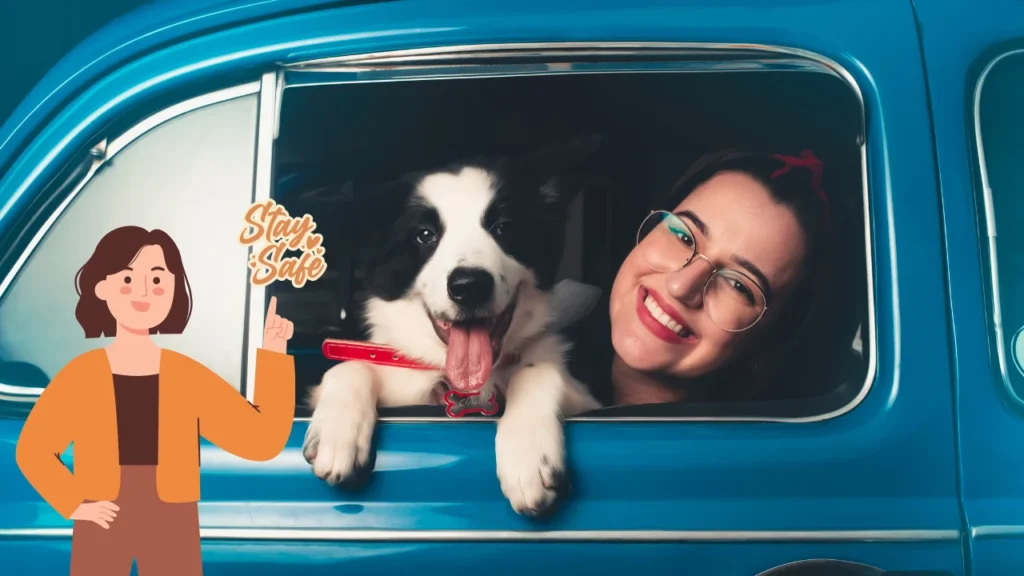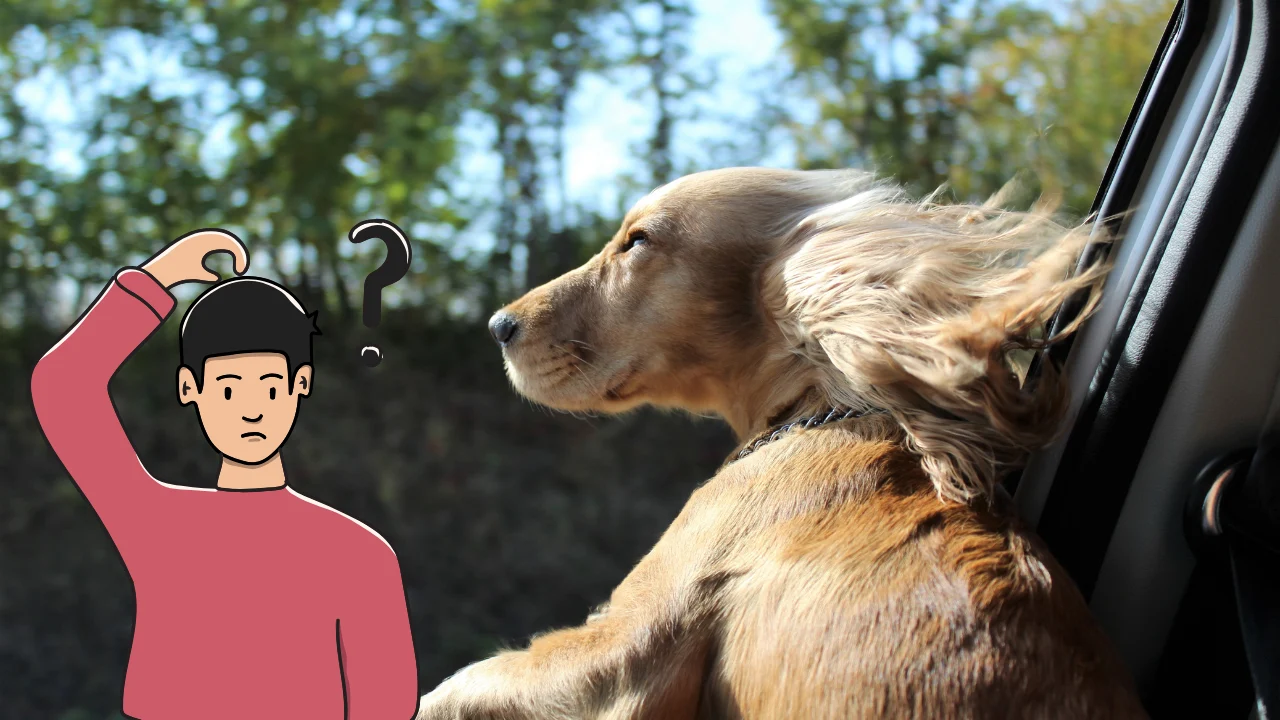Have you ever wondered, “Are car rides stimulating for dogs?” Well, it’s a question that many pet owners ask. Studies show that sensory stimulation, like exposure to different smells, sights, and sounds, can engage a dog’s brain. In fact, research indicates that dogs’ brains are highly activated during car rides, especially when they encounter new environments. Curious if it’s illegal to leave a dog in a car? Learn more in Is It Illegal to Leave a Dog in a Car?.
When we think of car rides, most people associate them with fun trips or visits to the park. But these rides can be much more than just travel—they offer dogs a rich sensory experience. According to experts, 80% of a dog’s mental stimulation comes from their sense of smell, and car rides can introduce them to new and exciting scents along the way.
Quick Look
Yes, car rides can be very stimulating for dogs! They engage a dog’s senses with new sights, sounds, and up to 10x more scents than a walk. However, some dogs may feel anxious or carsick, so always prioritize their comfort and safety.
Navigation Menu
Do different dog breeds respond differently to car rides?
Yes, different dog breeds respond differently to car rides due to their unique temperaments, energy levels, and instincts. For example, high-energy breeds like Border Collies may find car rides stimulating, while more laid-back breeds like Bulldogs might enjoy the calmness.
Breeds prone to anxiety, such as Chihuahuas, might feel uneasy during car travel, whereas adventurous breeds like Labradors often love it. Additionally, smaller breeds may feel less secure in moving vehicles compared to larger dogs.
Socialization and past experiences also play a big role. It’s essential to observe your dog’s behavior and adjust the ride to suit their specific needs. Wondering if Dramamine is safe for dogs with car sickness? Find the answer in Can Dogs Take Dramamine for Car Sickness?.
Sensory Stimulation During Car Rides

Car rides can be a lot more stimulating for dogs than you might think. The various sensory inputs they experience during a drive play a big role in keeping their minds active and engaged.
Visual Stimulation
When we’re on the road, my dog is constantly taking in new sights. From other cars zooming by to the changing landscapes, it’s like a moving world of adventure. Studies suggest that dogs’ visual systems are highly tuned to detect movement, so they’re likely watching everything that passes, which keeps their brains sharp.
Olfactory Stimulation
Dogs experience the world through their noses, and car rides open up a whole new olfactory universe for them. As we drive, my dog picks up on new scents – from the street to trees and even the smells left behind by other animals. Research shows that a dog’s sense of smell is 40 times more powerful than ours, so it’s safe to say their noses are getting a serious workout.
Auditory Stimulation
The sounds we hear during car rides also pique my dog’s interest. From the hum of the engine to the honks of horns and the whoosh of passing vehicles, these noises help keep my dog alert. Experts have found that dogs have a much wider hearing range than humans, which means they’re probably noticing subtle noises that we can’t even pick up on.
Cognitive Engagement and Mental Exercise

When you take your dog on a car ride, it’s not just about the journey—it’s a chance to engage their mind. Think about it: every stop, every turn, every new scent and sound adds something new to their sensory world. It’s like a mental workout for your dog.
The sensory overload that comes with car rides can really keep a dog’s brain active. For example, dogs have a sense of smell that’s 40 times stronger than ours, so during a ride, they’re picking up on a whole world of scents we can’t even imagine. This mental stimulation is just as important as physical exercise for keeping your dog’s mind sharp.
You might notice that your dog is more alert during car rides. This is because their brain is processing all the new information—from the sound of the engine to the sights outside. It’s a form of mental exercise that can help prevent boredom, which is a leading cause of destructive behavior in dogs. Wondering if it’s safe to take your dog to Mexico by car? Read Can I Take My Dog to Mexico by Car? to find out.
Emotional and Social Benefits
Car rides offer more than just physical stimulation; they provide significant emotional and social benefits for dogs. These rides are an excellent way to strengthen your bond with your dog and give them opportunities to socialize.
Strengthening the Bond Between You and Your Dog
One of the most significant emotional advantages of car rides is the strengthening of the bond between you and your dog. Spending quality time together in the car allows for shared experiences, and this deepens trust. In fact, studies show that dogs who spend more time with their owners experience a 30% increase in positive behaviors, like calmness and responsiveness.
Socializing with New People and Animals
Car rides also offer dogs a chance to socialize with new people and animals, especially during stops. If you’re visiting a park or pet-friendly store, the environment can help your dog become more comfortable with different situations. Research indicates that 60% of dogs that are socialized regularly are less likely to exhibit anxiety in unfamiliar environments.
Considerations for Safe and Enjoyable Car Rides

Car rides can be a lot of fun for both dogs and their owners, but there are some things to keep in mind to ensure the ride is safe and enjoyable. Let’s dive into how to make car trips the best experience for your furry friend.
Safety Measures
Safety is always the top priority, so securing your dog properly in the car is a must. According to the American Kennel Club, approximately 84% of dog owners don’t secure their pets while driving, which can be risky. Whether you’re using a dog seat belt, a crate, or a pet carrier, make sure your dog is safely restrained to prevent distractions and injury.
Comfort and Well-being
If you’re planning a longer journey, comfort is key to keeping your dog relaxed. For instance, dogs should have enough space to move but not too much where they might get uncomfortable or anxious. Adding a soft blanket or cushion to their spot in the car can make the ride smoother and more enjoyable, especially for dogs that get travel-sick—about 1 in 5 dogs experience motion sickness on car rides.
Gradual Introduction
For dogs that are not used to car rides, it’s helpful to start slow. Begin with short, positive trips around the neighborhood before heading out for longer adventures. I’ve found that taking my dog on these mini trips helped reduce anxiety and increased her excitement. Using treats or a favorite toy as a reward for calm behavior during the ride can also work wonders! Looking for tips on how to calm dogs in the car? Check out How to Calm Dogs in the Car.
Potential Drawbacks and Considerations
While car rides can be exciting and stimulating for dogs, it’s essential to consider some potential drawbacks. Not every dog enjoys car rides, and some may experience anxiety or discomfort during travel.
Anxiety and Motion Sickness
According to the American Kennel Club, about 30% of dogs suffer from motion sickness. This can make car rides less enjoyable and even stressful for them. If your dog gets car sick, it might feel nauseous and anxious, leading to unpleasant experiences.
Individual Preferences Matter
Just because one dog loves car rides doesn’t mean yours will. I’ve noticed that some dogs simply don’t feel comfortable in a vehicle, even with positive experiences. Understanding your dog’s unique preferences will help you decide whether car rides are stimulating for them.
Monitoring Your Dog’s Behavior
Pay close attention to how your dog reacts during and after car rides. If they seem uncomfortable or overly anxious, it could be a sign that car rides are not the right stimulation for them. Gradually introducing shorter trips can help, but it’s essential to monitor their behavior closely. If your dog got hit by a car and you can’t afford a vet, Dog Got Hit by Car, Can’t Afford Vet offers important advice.
Wrap Up
In my experience, car rides are more than just fun for dogs—they’re a treat for their senses! Studies show dogs experience up to 10x more scents during a drive than on a regular walk, making it an exciting adventure.
However, about 20% of dogs may experience motion sickness or anxiety, so always monitor their reaction. If you’re asking, are car rides stimulating for dogs? the answer is yes, but remember to prioritize their safety, comfort, and individual needs every time!
FAQs
How do age and energy levels influence a dog’s enjoyment of car rides?
Age and energy levels significantly impact a dog’s experience of car rides. Puppies and high-energy dogs may find rides exciting and stimulating, while senior dogs or low-energy breeds might prefer calmer trips. Older dogs might also face discomfort due to joint issues, making long rides less enjoyable. Always tailor the car ride’s length and activity level to match your dog’s energy and age to ensure a positive experience.
Can car rides help reduce anxiety or hyperactivity in some dogs?
Yes, car rides can reduce anxiety or hyperactivity in certain dogs by offering mental stimulation and distraction from stressful environments. For hyperactive dogs, the new sights and scents during a ride can provide an outlet for their energy. However, for anxious dogs, gradual exposure and positive reinforcement are crucial to ensure the ride is a calming experience rather than a source of stress.
What role does weather play in making car rides enjoyable for dogs?
Weather plays a big role in how much dogs enjoy car rides. Hot weather can make rides uncomfortable, especially for breeds sensitive to heat, while cold weather may feel cozy for fluffy breeds. Proper ventilation and temperature control are key. Rainy or windy conditions can also add excitement for some dogs as they experience unique scents and sounds during the ride. Always adjust based on your dog’s comfort.

